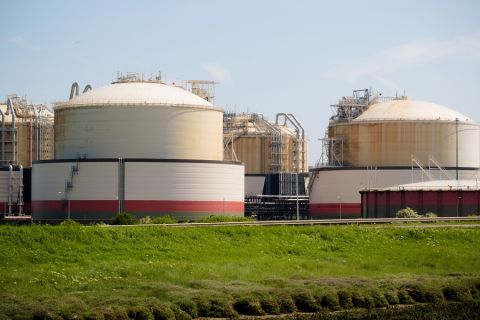Americans continue to use more natural gas as the nation’s unconventional shale plays provide a larger share of domestic gas needs.
The U.S. Energy Information Administration’s (EIA's) recently released Natural Gas Annual pegged total U.S. gas consumption at 26.13 trillion cubic feet (Tcf) during 2013, a 2.3% increase from the prior year—but a sharp 14% increase from just four years earlier in 2009.
“Total U.S. natural gas gross withdrawals reached a new high at 82 billion cubic feet per day (Bcf/d) in 2013, with shale gas wells becoming the largest source of total natural gas production” for the first time, the agency reported.
Production from shale wells averaged 33 Bcf/d for the year, the EIA said. In comparison, U.S. shale wells produced only 5 Bcf/d in 2007 at the start of the energy industry’s run-up in shale drilling and development. Shale wells produced a total of 11.9 Tcf of gas in 2013, compared with 11.3 Tcf from conventional wells. Associated gas produced by oil wells totaled 5.4 Tcf, up from 4.96 Tcf in 2012, while coalbed methane production continued a long-term decline to 1.4 Tcf, down 7.4% for the year.
“In 2007, shale gas wells made up 8% of total natural gas produced in the United States, with 63% of shale gas production coming from Texas,” the EIA added. “Since then, the distribution of shale gas production by state has changed significantly in the United States, especially in Texas, Pennsylvania, Louisiana, and Arkansas. These states accounted for 26 Bcf/d, or 79%, of U.S shale production in 2013.”
The number of gas-producing wells at year-end 2013 stood at 487,286, up from 482,822 as 2012 ended but down from 493,100 wells at year-end 2009.
Recommended Reading
Exxon’s Payara Hits 220,000 bbl/d Ceiling in Just Three Months
2024-02-05 - ExxonMobil Corp.’s third development offshore Guyana in the Stabroek Block — the Payara project— reached its nameplate production capacity of 220,000 bbl/d in January 2024, less than three months after commencing production and ahead of schedule.
Venture Global, Grain LNG Ink Deal to Provide LNG to UK
2024-02-05 - Under the agreement, Venture Global will have the ability to access 3 million tonnes per annum of LNG storage and regasification capacity at the Isle of Grain LNG terminal.
What's Affecting Oil Prices This Week? (Feb. 5, 2024)
2024-02-05 - Stratas Advisors says the U.S.’ response (so far) to the recent attack on U.S. troops has been measured without direct confrontation of Iran, which reduces the possibility of oil flows being disrupted.
McKinsey: US Output Hinges on E&P Capital Discipline, Permian Well Trends
2024-02-07 - U.S. oil production reached record levels to close out 2023. But the future of U.S. output hinges on E&P capital discipline and well-productivity trends in the Permian Basin, according to McKinsey & Co.
EIA: Oil Prices Could Move Up as Global Tensions Threaten Crude Supply
2024-02-07 - Geopolitical tensions in the Middle East and ongoing risks that threaten global supply have experts questioning where oil prices will move next.





